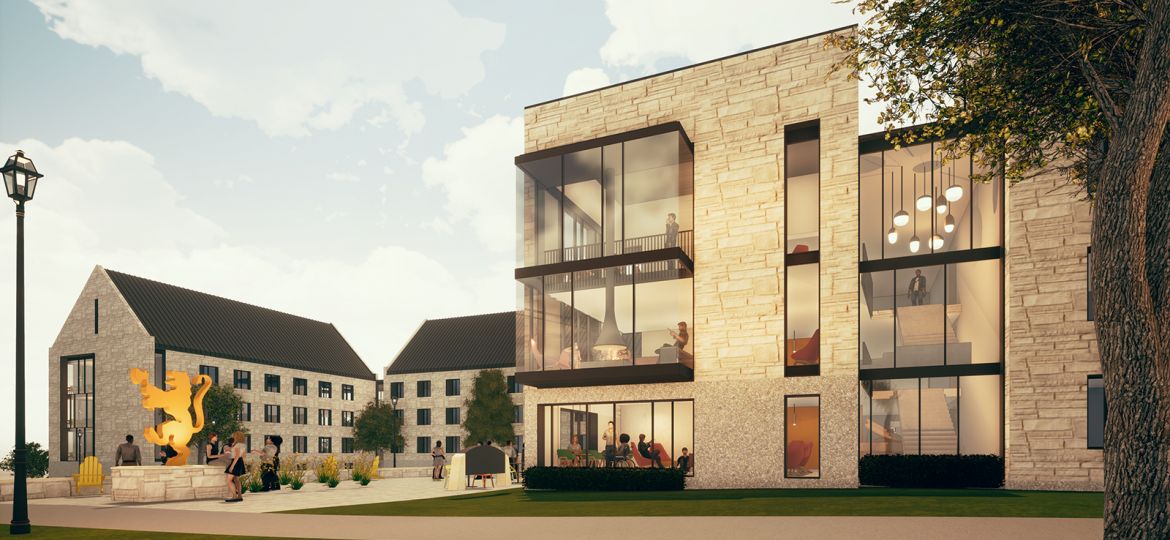
The Ole Avenue housing project, announced last winter and set to be completed by 2022, was supposed to replace the honor houses and President David Anderson ’74’s home with a new dorm and fourteen townhouses on St. Olaf Avenue. However, with the circumstances surrounding COVID-19, some of the honor houses are now being used to house infected students as they recover. As such, their removal to make way for the townhouses cannot begin.
“We would normally be breaking ground right now, and you would have seen six of the honor houses taken down over the summer had COVID not happened,” Associate Dean of Students for Residence Life Pamela McDowell said.
The original plan was to have the townhomes completed by 2022 and the residence hall for 2023, but the townhomes have now been delayed and the residence hall will stay projected for completion in 2023.
McDowell explained that the pandemic has shown the College what they are missing in terms of housing.
“What we wish we had are more suites with their own bathrooms because when we were looking for quarantine and isolation space, we didn’t have much of that,” McDowell said.
The company that is working with St. Olaf, Workshop Architects, is putting together the building documents, and the Board of Regents will have another vote in October to determine the project’s path.
The first vote to postpone the housing project was held in January, and the Board of Regents is now reevaluating how to move forward with budgeting and revenue, McDowell said.
The new residence hall will take the place of President Anderson’s Northfield house, but the College does not plan to tear down any other buildings on the southside of St. Olaf Avenue at the moment. Due to COVID-19 and the delay of construction, the counseling center in Boe House does not yet have to move.
Despite the delay, planning is still continuing, which McDowell expressed excitement in. According to McDowell, students will be able to try out and vote on different styles of furniture that they like best. The townhomes will also employ various efficient systems, such as potentially adding outdoor mail lockers that will allow students to pick up mail outside their townhome rather than up The Hill.
Creating new residence halls that match campus architecture while allowing students to feel at home is a challenge, but one McDowell is passionate about.
“I love talking about the common areas and the open spaces and seeing the lounges and open kitchens,” McDowell said. “We’re talking about how we can make something that fits with our campus, which is the limestone part, but also making it feel inclusive to anybody from anywhere. Those are the most important things.”

